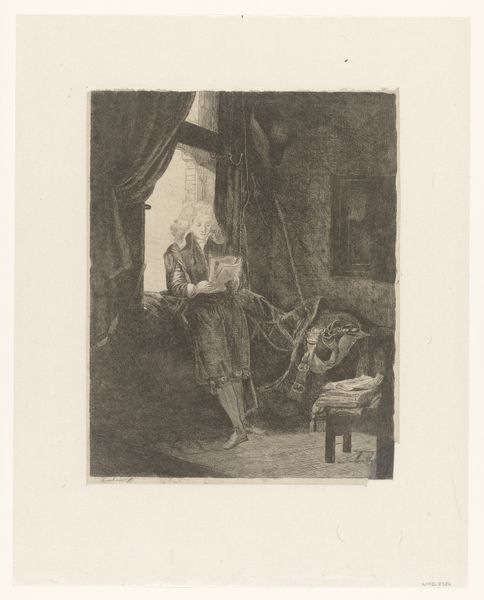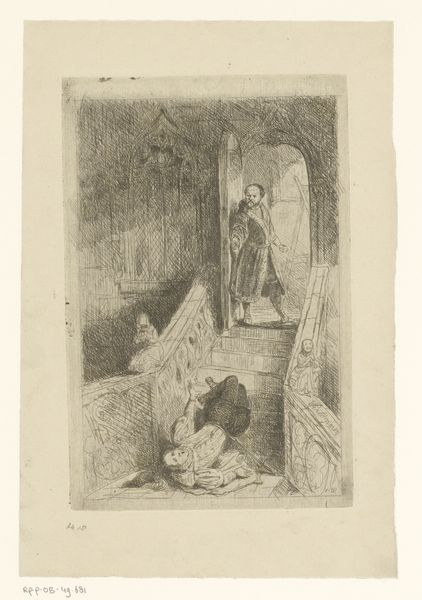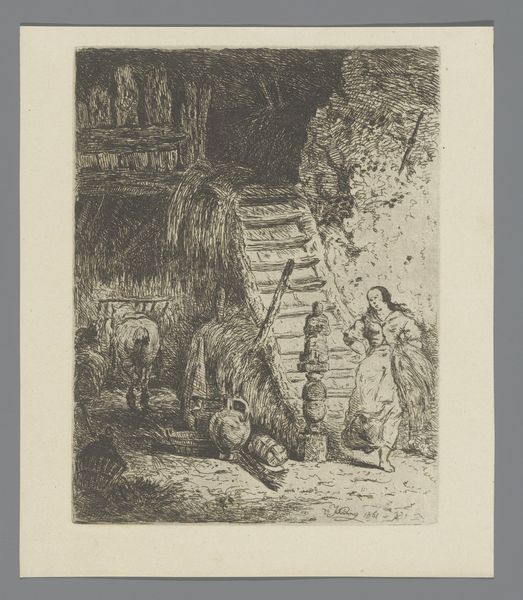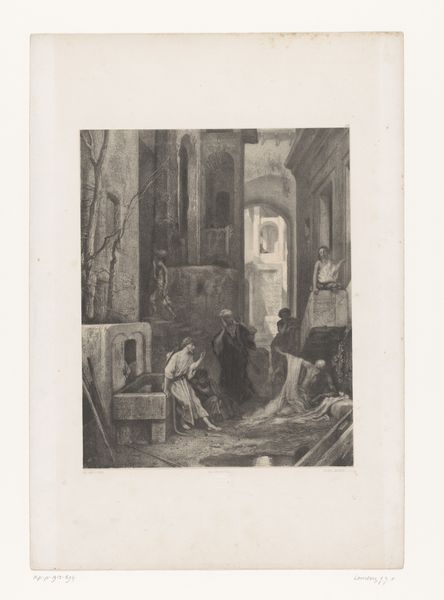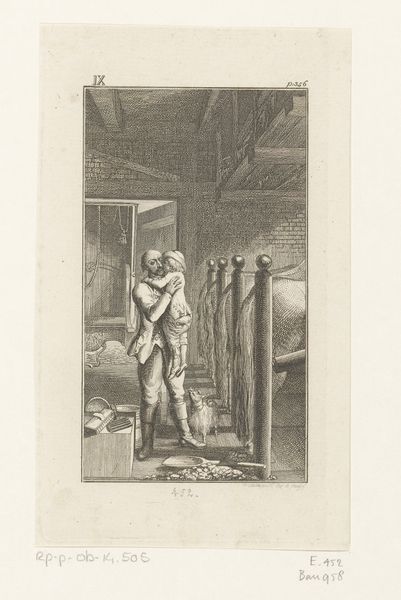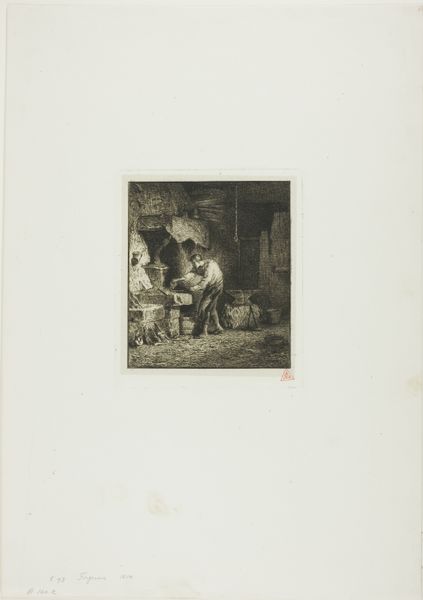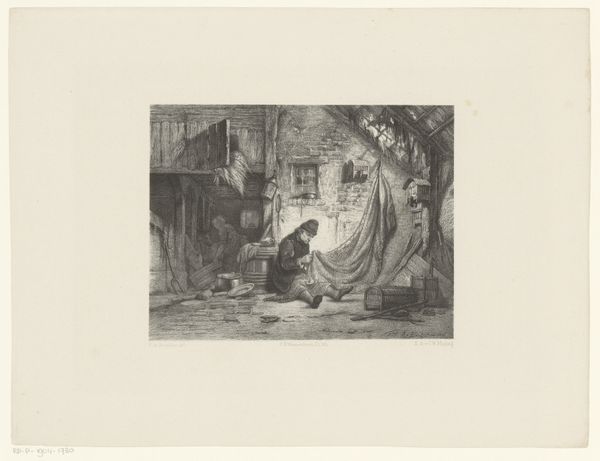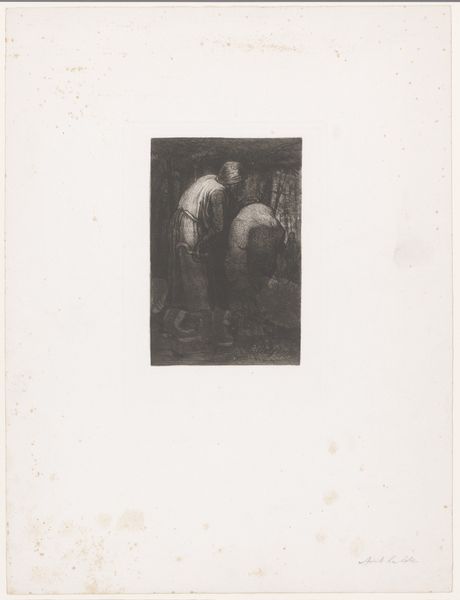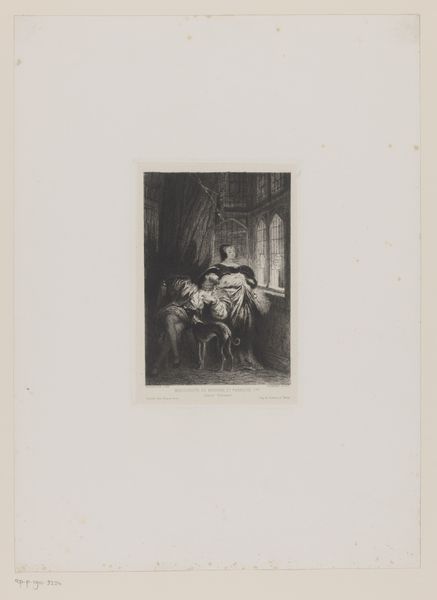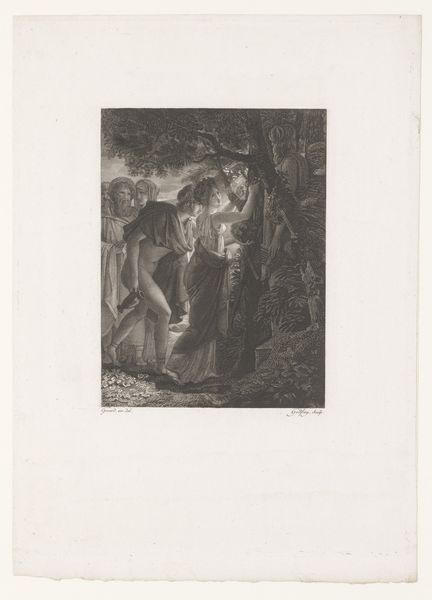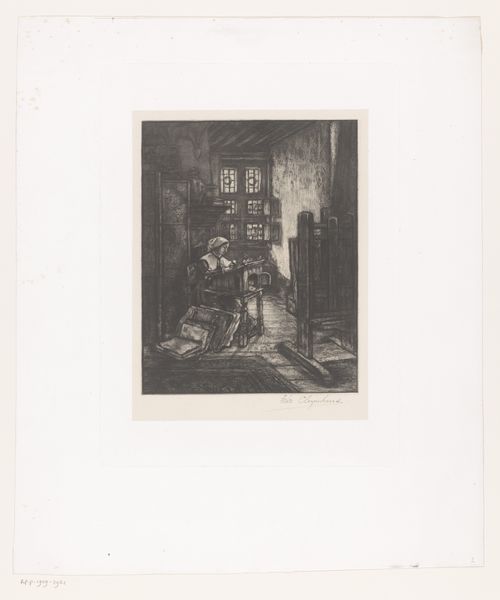
drawing, print, etching, pen
#
pencil drawn
#
drawing
#
ink paper printed
# print
#
etching
#
pencil sketch
#
landscape
#
figuration
#
pen
#
pencil work
#
genre-painting
#
realism
Dimensions: height 154 mm, width 110 mm
Copyright: Rijks Museum: Open Domain
Curator: Here we have "Street Fight Between Two Half-Naked Men with Knives," an etching, pen, pencil and print on ink paper dating back to 1872, created by Adrien Aubry, held here at the Rijksmuseum. Editor: The energy is so palpable! Even in monochrome, you feel the struggle, the tension of a desperate confrontation unfolding. The texture, built up with these dense marks, makes it all the more raw. Curator: Absolutely. And Aubry situates it within a broader context of societal tensions. Who are these men? What forces in their lives brought them to this point of brutal conflict in this urban space? Are they caught in a cycle of marginalization and violence? I wonder about systems of power at play here. Editor: Yes, systems are interesting, but I’m struck more by the enduring archetype here – the duel, the desperate fight for survival. Notice how Aubry uses shadow and light – the buildings leaning in and becoming participants and onlookers. Think about that contrast in symbolic terms - those buildings, standing in for the established order, looming large, as silent witnesses. Curator: And perhaps those buildings signify something more sinister, literally constructed as prisons and systems of inequality for these men? The angle from below adds another layer of perspective as if someone is trying to be quiet or unseen. Editor: Or they are there in that same predicament: trying to decide if helping one of the men is ethical when there may be repercussions from those bricked buildings. The artist’s inclusion of what may be an abandoned hat or perhaps lost, shows the aftermath of a swift move, the moments or consequences, literally. It almost creates a time lapse to showcase how fleeting those split decisions may be. Curator: The ambiguity makes this artwork so potent. Are we meant to sympathize, condemn, or simply observe? And to what extent does Aubry's perspective – presumably a position of relative privilege as an artist – influence the narrative? What is Aubry telling us about poverty or about manhood or even, simply, despair. Editor: The way Aubry handles line work gives it almost a dreamlike quality. Curator: Perhaps dreams lost, perhaps? Editor: Perhaps. All the marks come together and show more to learn. It's interesting. Thank you.
Comments
No comments
Be the first to comment and join the conversation on the ultimate creative platform.
